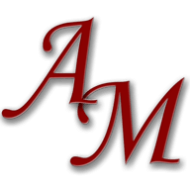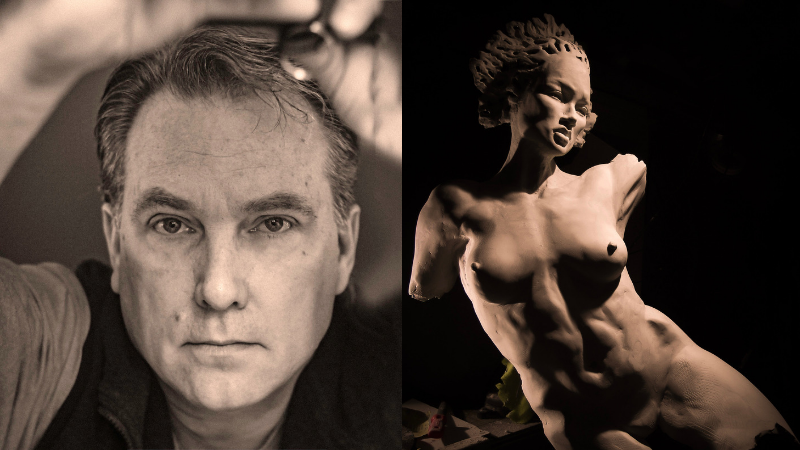“After many years of using the airbrush, it has become a profoundly magical process for me. I am amazed by how an image seems to magically appear, yet my hand never touches the painting’s surface”
Shannon Morrison is a self-taught artist who creates wonderful pieces of figurative art using his airbrush and acrylic paint. He was born in Michigan in 1973 and currently lives in Arizona, where he is focusing on increasing the production of paintings and improving his technique. With an Iwata HP-B airbrush and Createx colors, Shannon creates beautiful and realistic paintings with a subtle touch of fantasy.
When he is not painting or drawing, this artist also plays the shakuhachi—the Japanese bamboo-flute— and enjoys working out. He describes himself as a “fitness junkie”, and his passion for physical activities led him to appreciate more the human body and inspired him to study human anatomy. In his most recent work, Shannon focuses on the nude female body.

In this Q&A artist Shannon Morrison shares with PoseSpace how he got into art, why he uses airbrush as a tool, what life experiences influenced his work, valuable advice for artists who have an interest in airbrush and more:
Can you tell us about your background and how you got into art?
I have always been involved in art. Ever since I was a young child, I can remember spending hours drawing and coloring. One of my most profound memories was becoming incredibly jealous one holiday because my older brother got a Super Hero drawing set and I did not. I don’t even remember what I did get that holiday. All I remember is that I wanted a drawing kit, so that I could also draw things.
As I got older, I took drawing classes in school, confident that I could go somewhere with my artistic talent. Challenging life experiences kept me from pursuing further art education past high school, but I continued independent art study on my off time and weekends. I worked with anything I could – books, DVD’s, and just pure practice.
In my thirties, I launched a small graphic art business specializing in airbrush and custom painting. This lasted about a decade before I grew weary of the pressures of deadlines and unreasonable requests. I began to realize that I was not cut out for that specific industry and closed the business.
In recent years, I have shifted focus to pursue my own visions and ideas, and that’s where I intend to spend my remaining artistic years.
Why did you choose the airbrush as your main tool?
I chose the airbrush because of its apparent unmatched ability to convey realism, as demonstrated in the inspirational works of Chuck Close, Don Eddy and H.R. Giger. Now, after many years of using the airbrush, it has become a profoundly magical process for me. I am amazed by how an image seems to magically appear, yet my hand never touches the painting’s surface – I have a thought and it’s then rendered.
What life experiences have influenced your work?
There are two major life experiences that have shaped and influenced my art, from the tools used to the subject matter. First, my family seemed to have a never-ending struggle just to get by and I grew up with very little, which forced me to use my imagination as a way to escape this reality. I would create my own intricate worlds which, still to this day, I see come out in my paintings.
Additionally, I was extremely physically active and worked hard to develop my physical capacities, which contributed to my obsession about how the body looked and moved in space. This appreciation and fascination for the human form became the main focus of my art and paintings. My ideas focused on capturing the form in action, like a split second in time, similar to that of a still frame. This stop-in-action would create questions for the viewer as they searched for the story, often creating tension that could not be resolved.
Do you listen to music while you work? What is your perfect environment to paint?
I am an amateur musician and therefore music is always on when I paint. I use music to shape moods – if the art has a light theme, I find music that creates that mood in me before I start to paint. It’s very hard for me to paint a sad theme in a painting while listening to music that picks me up and makes me happy (and vice versa).
Regarding PoseSpace, do you prefer individual poses, books, or sessions?
Early on, I had been using images from magazines and the internet, but I felt that the finished paintings and images were not fully mine because of potential copyright issues. One solution, using live models, was both time and cost-prohibited for me. Later, I stumbled upon PoseSpace, which eliminated my need to find or afford live models. Pose Space allowed me to produce finished art in full confidence that it was my own and without the worries of legal ramifications.
Additionally, I use Sessions, but I had started off with a couple of hard bound books from Amazon. Sessions allows me to see and adjust different perspective and angles with the same model.
What advice do you have for artists who have an interest in airbrush?
The most beneficial advice I can give aspiring airbrush artists is to see the airbrush as a tool to produce a result. Similar to other art processes, it will have to be learned and practiced until it becomes second nature. In teaching airbrush classes in the past, I found that a lot of the students assumed that the airbrush was easy and some type of silver bullet that would paint great art for them, but that’s not the case. It takes time to master the airbrush, and even after that you still need to have developed drawing skills, understand value and shape, and have mastery of composition and color theory to produce good art. It is my belief that the airbrush does nothing more than apply paint—a very cool way to do it— but it’s still just another tool.

How has your style changed over the years?
Art is a process that is ever unfolding and growing in me – what I am working on now may change completely in ten years. There have been times on my artist’s journey where I never really thought of myself as good enough, but I kept at it. The days became weeks, weeks became months and finally months into years, and somewhere along the way I started looking at my own art and thinking “I am getting pretty good at this.” It became clear that I had gotten somewhere and had something worthy to say. Now in my forties, I have many years of learning and painting behind me (and so many more to go), yet I feel like I am just starting to see real fruits of my labor. My future goal is to just keep creating and moving forward.
Shannon Morrison’s website: http://shannonmorrisonstudios.com
Facebook: https://www.facebook.com/mrshannonmorrison
Instagram: https://www.instagram.com/shannon.morrison.artist/
Interview by Andrea Miliani






